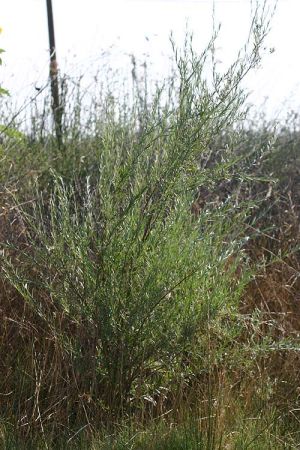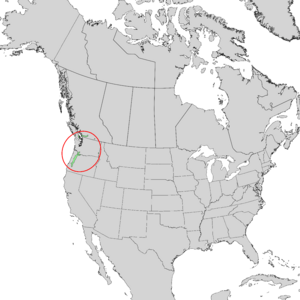Northwest sandbar willow facts for kids
Quick facts for kids Northwest sandbar willow |
|
|---|---|
 |
|
| Scientific classification | |
| Genus: |
Salix
|
| Species: |
sessilifolia
|
 |
|
| Natural range of Salix sessilifolia | |
| Synonyms | |
|
|
The Salix sessilifolia, also known as the northwest sandbar willow, is a special type of willow plant. It grows naturally along the west coast of North America. You can find it in places like British Columbia in Canada and the US states of Washington and Oregon.
This willow loves to grow in sandy and rocky areas near rivers. It often lives on floodplains, which are flat lands next to rivers that sometimes get covered with water. It also thrives on sandbars, which are piles of sand in rivers or along coastlines.
Contents
Discover the Northwest Sandbar Willow
What is the Northwest Sandbar Willow?
The Salix sessilifolia is a type of shrub. This means it's a woody plant that is smaller than a tree and usually has many stems. It can grow to be about 3 to 5 meters tall, which is like the height of a small house.
Where Does It Live?
This willow is perfectly suited for its home along rivers and streams. It needs sandy or gravelly soil to grow well. Its roots help to hold the soil in place, which can be helpful in preventing erosion along riverbanks.
How the Willow Grows
Its Unique Appearance
The leaves of the northwest sandbar willow can be up to 12 centimeters long. They are shaped like an oval with a pointed tip. If you look closely, you'll see tiny, spiny teeth along the edges of the leaves. They often have a thin, silky layer of hairs, making them feel soft.
Spreading and Reproduction
One cool thing about this willow is how it spreads. It can form large groups of plants that are all genetically identical, like clones! It does this by sprouting new plants directly from its root system. This way, it can quickly create thick patches of willows.
The willow also reproduces using flowers. Its flowers grow in clusters called catkins. Male catkins are usually about 4.5 centimeters long. Female catkins are longer and thinner. These catkins help the plant make seeds to create new willows.

